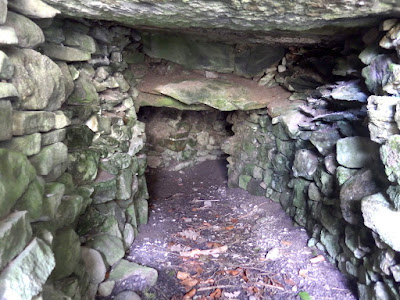A few weeks ago while in Carlow, I went to the fabulous restaurant "Mimosa Tapas & Wine Bar". Gnocchi was on the tapas menu, and we ordered some. My daughter absolutely loved them and was amazed to learn that I had made them before (though bizarrely not in her lifetime). I promised that the next time we had leftover mashed potatoes I would make gnocchi. Gnocchi are essentially a potato pasta. The ingredients are simple: mashed potato, egg, flour, pepper and nutmeg.
Mix the ingredients together. I have not measured anything. Spices are to taste, and the flour amount really is just according to how much mashed potato you have. I have only ever used one egg; I have only ever used leftover mash. Basically add flour so that it's a dough.
Roll dough into snakes on a floured surface.
Cut into shapes -- again I don't measure -- but these are about 1-1.5 cm. Dimple the shape with your finger and put on a floured plate.
Gnocchi are a dumpling pasta. Put in boiling water; they sink immediately but then rise to the surface when they are ready (a few seconds later).
Have a collander ready over a bowl and remove gnocchi with a slotted spoon.
Prepare an oven dish with some olive oil, and transfer gnocchi to it, shaking around a bit so that they get some olive oil on them. I always add a bit more olive oil over the top of the gnocchi and then some grated parmesan and ground pepper.
Bake for about 15 minutes.
Serve with whatever you normally eat with any pasta. Last time I made gnocchi I served with melanzane alla parmesana, but bacon & broccoli & chilli peppers with pesto (in this case, wild garlic pesto) is one of my favourite pasta accompaniments. Delicious!
































